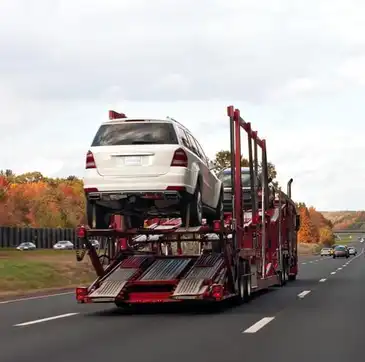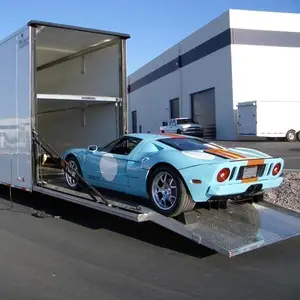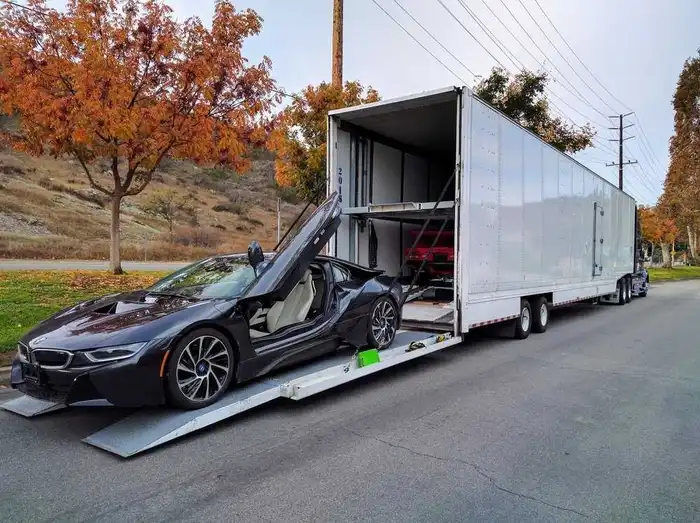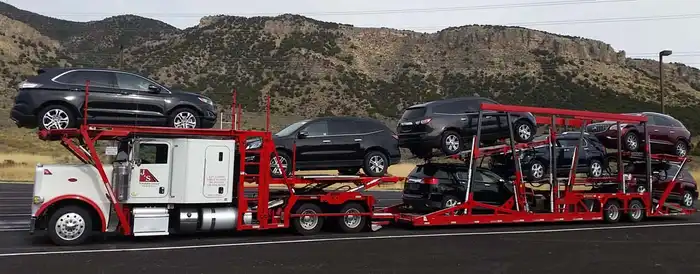Enclosed vs. Open Car Shipping. Shipping a car can be a daunting task, especially when deciding between enclosed and open car shipping options. Both methods have their unique advantages and drawbacks, but understanding their differences will help you make an informed decision. This article provides a comprehensive comparison between the two methods, offering valuable insights to ensure the safe and secure transportation of your prized possession.
An Overview of Enclosed and Open Car Shipping
Enclosed car shipping involves transporting vehicles inside a fully enclosed trailer, providing maximum protection against weather conditions, road debris, and other potential hazards. This method is particularly suited for luxury, classic, and high-value vehicles.
On the other hand, open car shipping entails transporting vehicles on an open-air trailer. This is the most common and cost-effective method, with vehicles being exposed to the elements and potential road debris. Open car shipping is ideal for standard vehicles and those not requiring extra protection during transit.
Protecting Investment: Advantages of Enclosed Car Shipping
- Superior Protection: Enclosed car shipping offers unmatched protection from weather-related damage, dust, and debris.
- Enhanced Security: The enclosed structure deters theft and vandalism, providing an additional layer of security for your vehicle.
- Customized Solutions: Enclosed carriers often cater to specific needs such as hydraulic lift gates for low ground clearance vehicles and climate-controlled environments for temperature-sensitive cars.
Cost-Effectiveness and Accessibility: Advantages of Open Car Shipping
- Affordability: Open car shipping is generally more affordable than enclosed shipping, making it the go-to choice for many car owners.
- Availability: Open carriers are more readily available, resulting in shorter wait times and more flexible scheduling.
- Better Visibility: During transit, open carriers allow for regular visual inspection of vehicles by the driver, ensuring any potential issues are promptly addressed.
Factors to Consider When Choosing Between Enclosed and Open Car Shipping
- Vehicle Value: High-end, luxury, classic, or antique vehicles may warrant the extra protection and investment of enclosed shipping.
- Distance and Route: Longer distances and routes with extreme weather conditions may necessitate enclosed shipping.
- Budget: Open shipping is the more budget-friendly option; however, consider potential repair costs if your vehicle suffers damage during transit.
- Personal Preference: Ultimately, your peace of mind and satisfaction should guide your decision-making process.
Preparing Your Car for Shipping: Tips for Both Enclosed and Open Options
- Clean and Inspect: Thoroughly clean your vehicle and document its pre-shipping condition with photographs.
- Remove Personal Items: Remove all personal belongings and valuables from your car, as carriers are not responsible for these items.
- Disable Alarms and Antitheft Systems: Inform the driver of any peculiarities and provide instructions for disarming alarms or antitheft systems.
- Check Fluids and Tire Pressure: Ensure your car is in good running condition with appropriate fluid levels and tire pressure.
Conclusion
Understanding the differences between enclosed and open car shipping is essential when deciding the best method for transporting your vehicle. Enclosed shipping provides superior protection and security, while open shipping offers cost-effectiveness and accessibility. Ultimately, your choice should be guided by factors such as your vehicle’s value, shipping distance, budget, and personal preferences. Whichever method you choose, preparing your car for shipping will ensure a smooth and successful transportation experience. We hope we’ve helped you make up your mind about Enclosed vs. Open Car Shipping!





